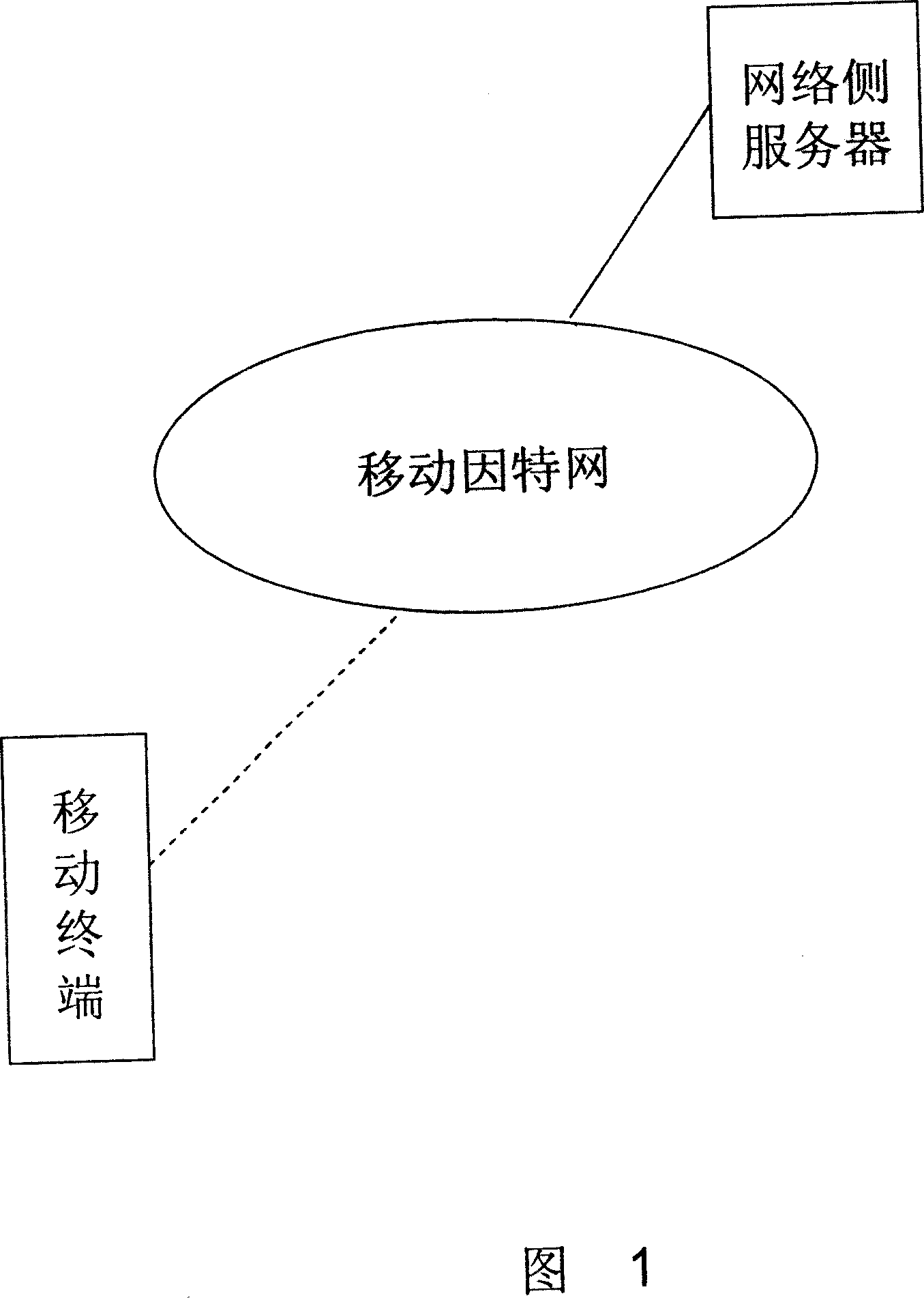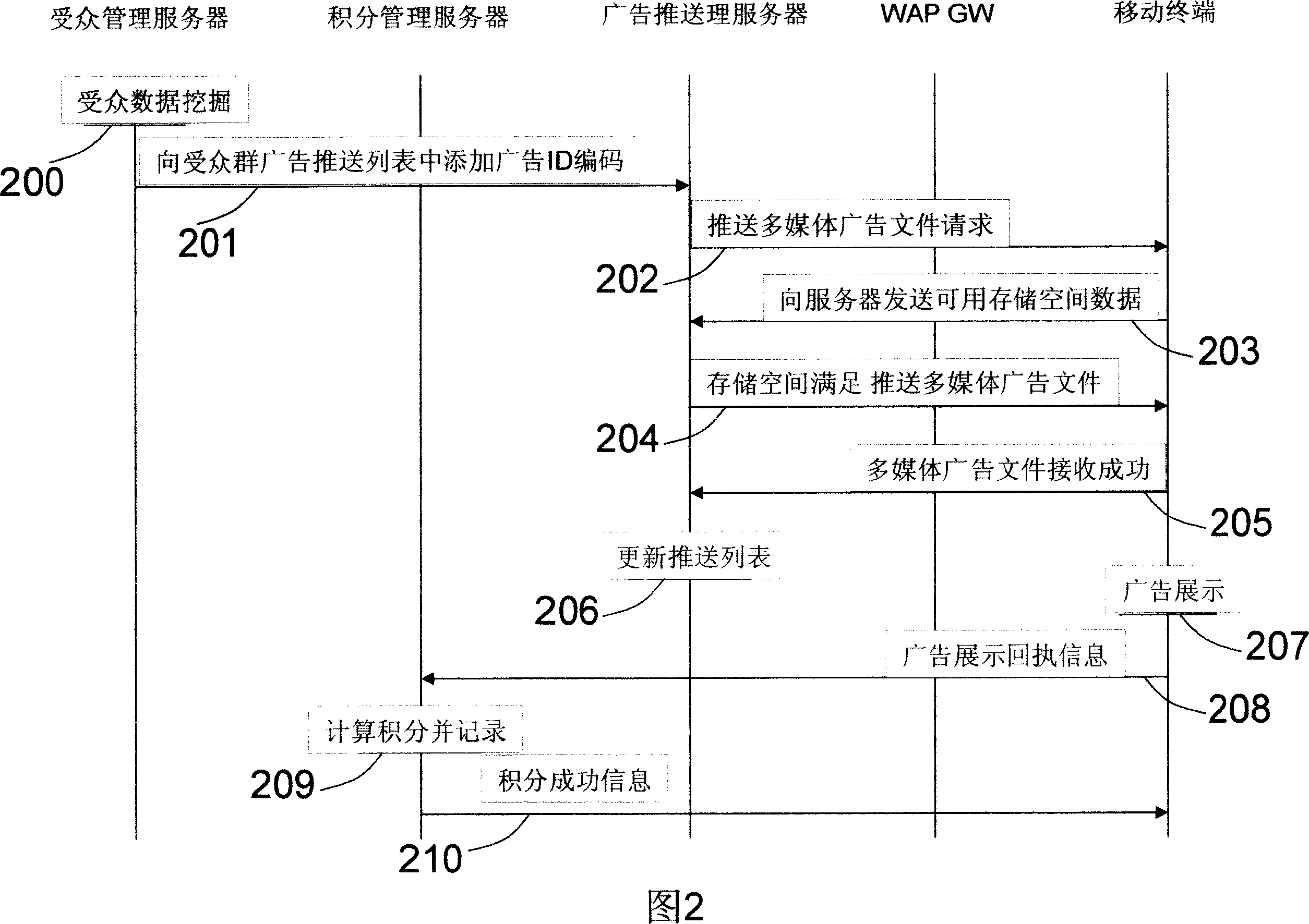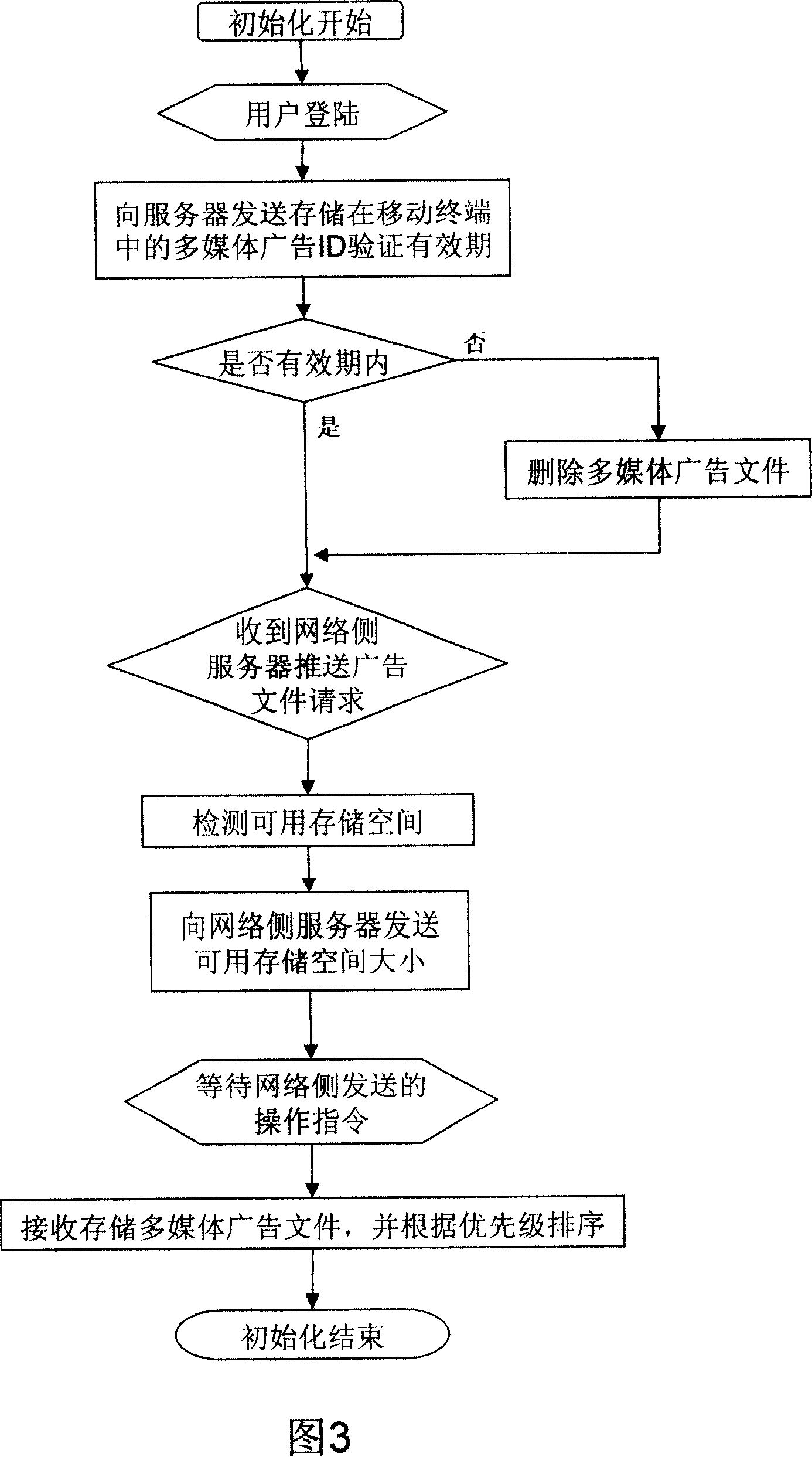Method for realizing mobile terminal dynamic cache memory multimedia interactive advertisement
A technology of a mobile terminal and an implementation method, applied in the direction of automatic exchange, data exchange details, telephone communication, etc., can solve the problems of limited amount of advertising information, unstable wireless signal, congestion, etc. Precisely targeted effects
- Summary
- Abstract
- Description
- Claims
- Application Information
AI Technical Summary
Problems solved by technology
Method used
Image
Examples
Embodiment Construction
[0081] Please refer to Figure 1, the mobile terminal accesses the mobile Internet wirelessly, and the server on the network side is a group of servers that complete audience management, point management, and advertisement push functions.
[0082] Please refer to Figure 2, which is a communication flow chart between the network side server and the mobile terminal, and is the main flow chart explaining the interaction between the network side server and the mobile terminal for multimedia advertisement file interaction and user points.
[0083] When a new advertising plan is published, the audience management server firstly mines audience data from the user database according to the advertiser's requirements to form target user audience group data (step 200).
[0084] The advertisement push server has an advertisement push list made for each mobile user, and the audience management server adds the unique ID of the planned multimedia advertisement to the advertisement push list of ...
PUM
 Login to View More
Login to View More Abstract
Description
Claims
Application Information
 Login to View More
Login to View More - R&D
- Intellectual Property
- Life Sciences
- Materials
- Tech Scout
- Unparalleled Data Quality
- Higher Quality Content
- 60% Fewer Hallucinations
Browse by: Latest US Patents, China's latest patents, Technical Efficacy Thesaurus, Application Domain, Technology Topic, Popular Technical Reports.
© 2025 PatSnap. All rights reserved.Legal|Privacy policy|Modern Slavery Act Transparency Statement|Sitemap|About US| Contact US: help@patsnap.com



